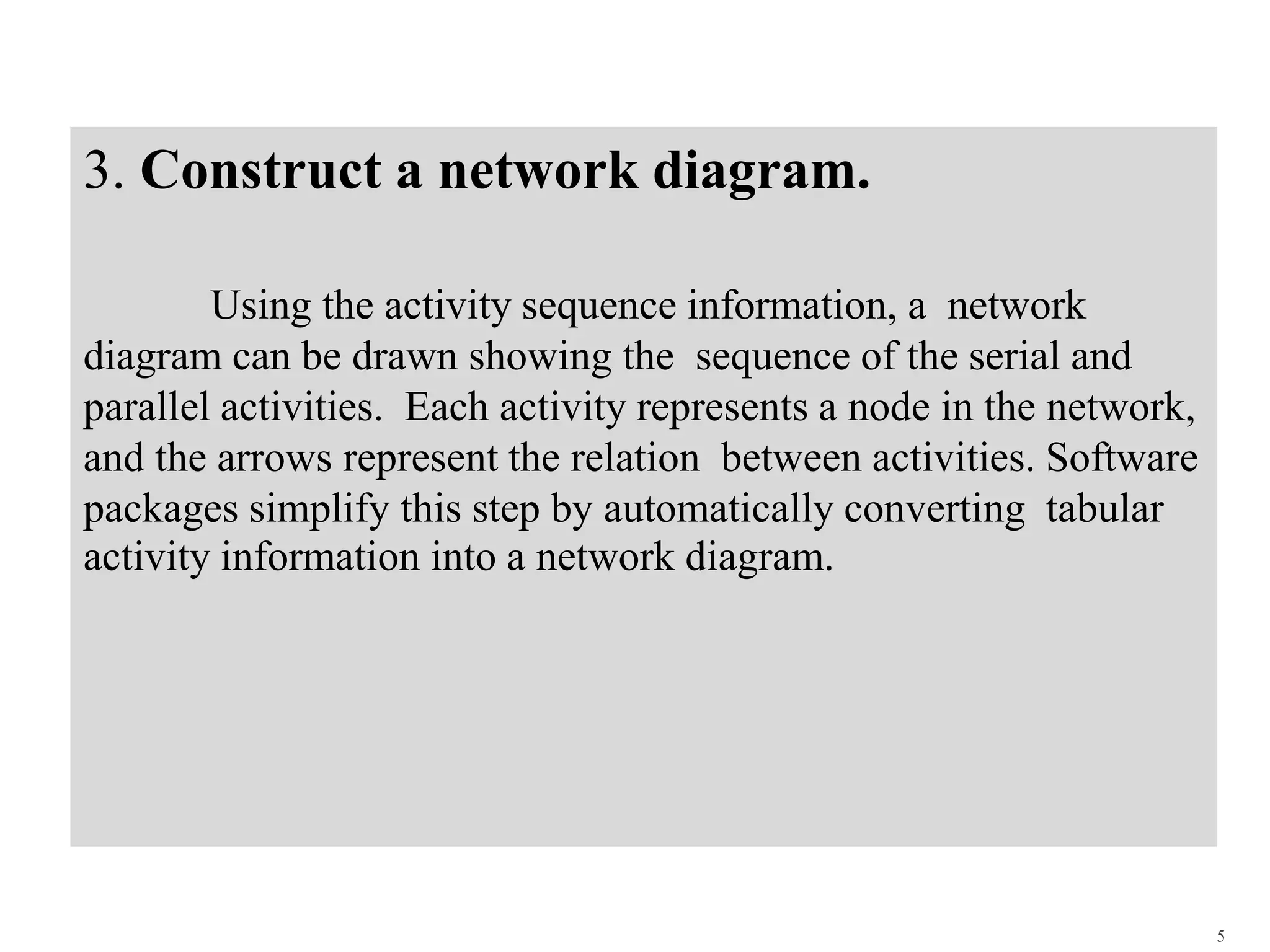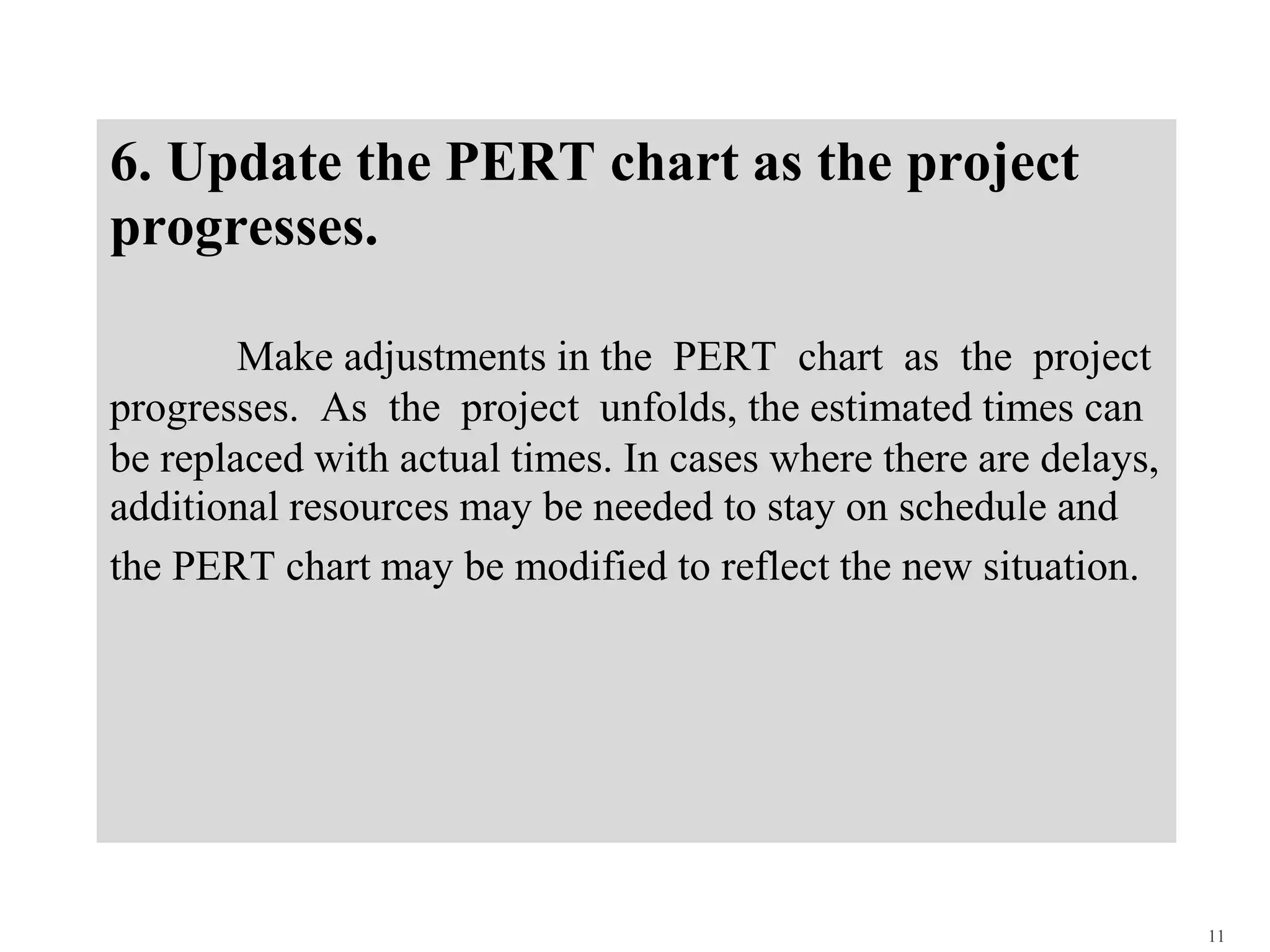The Program Evaluation and Review Technique (PERT) is a project management tool designed to schedule, organize, and coordinate tasks, notably for complex projects with many interdependent activities. PERT uses a network diagram to visualize tasks and employs three time estimates to manage uncertainties in activity completion, ultimately determining the critical path to ensure project timelines are met. The method involves identifying activities, sequencing them, estimating duration, and updating the PERT chart as the project progresses.


















